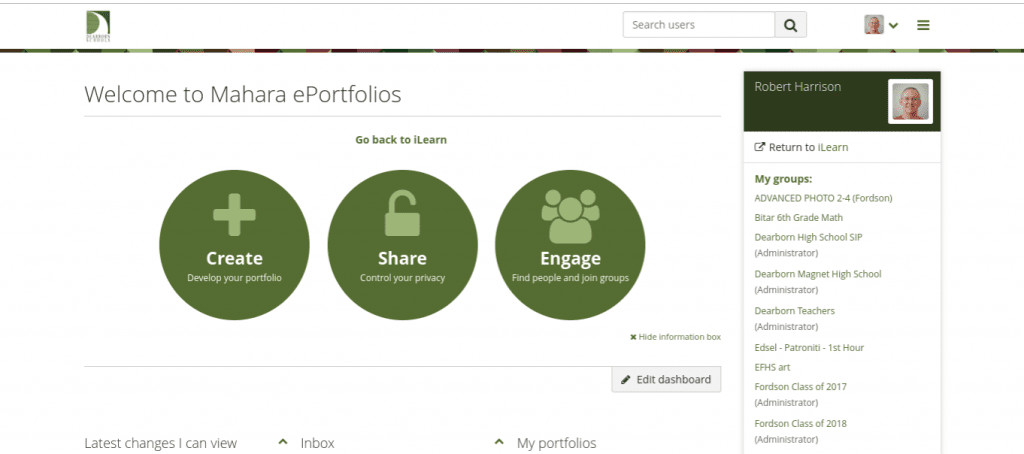Students Should Be the Ones Making the Case that They’re Proficient
All of us use it: the end-of-the-semester, culminating project. Or maybe it’s the cumulative whopper of a final exam. And why not? It’s what we had to do when we were in school, wasn’t it? All classes must end in some sort of final event that makes students scramble and fret. And then we get offended when they don’t. We say things like, “These kids just don’t care anymore.” We bemoan their lack of compliance with our archaic schemes and wonder how they are ever going to make it through life if they can’t study for a final exam. So we try different things to polish up the same old tricks. We try to make the project more exciting, more “engaging”. We let them use the study guide <gasp> on the exam. And we move on with our creative grading practices to make sure things look the way we want them to.
But the problem doesn’t entirely reside with “kids these days.” The fact of the matter is they will make it through life whether they can study for our final exam or not. And the 3 week final project they spent 14 minutes on will not matter one bit.
 So why not try something different–something that will create patterns of behavior that could be of benefit as they move on with their lives beyond our classrooms? Why not try letting students drive the final project? One way to do this is with the use of an ePortfolio. And this can be done with a tool we all have at our disposal as Dearborn teachers, Mahara.
So why not try something different–something that will create patterns of behavior that could be of benefit as they move on with their lives beyond our classrooms? Why not try letting students drive the final project? One way to do this is with the use of an ePortfolio. And this can be done with a tool we all have at our disposal as Dearborn teachers, Mahara.
What students should be doing at the end of our classes is making the case that they are proficient in the standards they were required to be proficient in by the end of our classes. And they should be supporting their case with evidence from our classes. All of this can be done by creating pages and collections of pages in Mahara, and then collecting and curating work from the course of the semester to make their case.
Well that’s not fun, you say. Of course not. The point of education has never been fun. That’s not our job. Our final exam isn’t fun either. And, sorry, neither is that project that we worked so hard to make “engaging”. But it can be more effective. Think about what an ePortfolio culminating assignment does for kids, among other things:
- It forces them to be in charge of the work they have done.
- It allows them to determine the way they will show evidence of their proficiency, rather than having to conform to our own limited pathway.
- It forces them to think critically about the work they’ve done and judge whether it sufficiently meets the standards.
- It requires them to know what the standards actually are for a class.
- It creates a mindset that is student-driven rather than the mode most of our students operate in: compliance.
- It instills a pattern of behavior that will benefit them in almost every area of life going forward: the need to make a strong case from evidence that they are valuable to their entity, be it their company, team, family, or society in general.
Getting Started
How do we start this? Very simple.
- First of all, students need to understand that they need to convince us that they are proficient in each of the standards for the class. What happens if they don’t? Well, as soon as they can convince us, they pass. It’s that simple. We can use a phrase like “I’ll be happy to give you a passing grade as soon as you show me convince me that you are proficient in each of the standards.”
- Next, decide on the format of what you expect. Do you want each standard to be represented on a separate page, linked together in a collection of pages? Or a single page that displays each of the standards? I’d recommend the former, since trying to locate the standards throughout a page can be tedious.
- Third, give students time to go to Mahara, collect their evidence, and decide what to display and how to display it. Invite them to re-do work they received feedback from us on or that they didn’t achieve a high score on. Let them know if the work they use as evidence does not show proficiency, it’s not valid evidence.

- Fourth, have them share the page. They can do this in multiple ways, the best of which is to turn it in as an assignment in iLearn (Moodle). You can even create a rubric for the assignment that will allow the grading process to go quickly.
- Fifth, have them present their ePortfolio. Be creative with the audience–it could be anything from a one-on-one interview to a jury of their peers. Perhaps include parent volunteers to have a panel in front of the class.
- Finally, think about this process at the beginning of the next semester. And prepare kids for it. This will help them develop the mindset that what they are doing is producing and collecting evidence of their learning. But start early. Because this isn’t just a final project. This is the ultimate objective.

